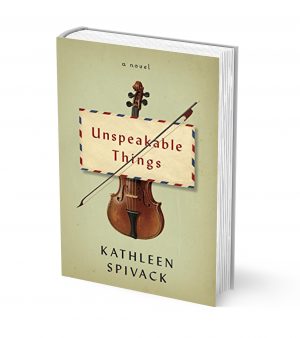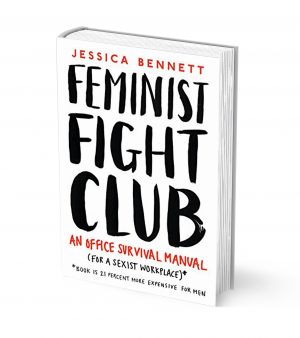Fiction
Unspeakable Things: A Novel
Kathleen Spivack (GRS’65)
Knopf
Spivack’s novel is a fever dream of history, a romance, a psychosexual fantasy, and a fairy tale. The downfall of Romanov Russia, the rise of Hitler, the invasion of Austria, and the Holocaust connect with Freud, Nietzsche, and modernist art in the author’s preoccupations, especially as they lead to the mutilation and displacement of cultured Austrians and Russians, forcing them to seek safety in New York, where they form a community.
In wartime New York, a virtuous godfather figure, Herbert, takes charge and helps the exiled. His son, David, is a translator for the US Secret Service and David’s wife, Ilsa, works a day job to support their two children and pay the rent for a small Manhattan apartment. David’s family is soon joined in the crowded apartment by a new refugee, Anna (aka the Rat), a longtime chess partner and second cousin of Herbert’s, who is small and hunchbacked (with a “spine like a shrimp”) and full of stories. Herbert’s pianist wife, Adeline, resides in a nearby mental ward, broken by the loss of their best-loved son, Michael, to a Nazi death camp. Also in the family’s circle is pediatrician Felix (who is also secretly a worshipper of Hitler, a pedophile, and a mad scientist performing genetic experiments) and the Tolstoi Quartet, four Viennese musicians whose little fingers have been amputated by the Nazis for attempting to play avant-garde pieces instead of classics. Maimed and in exile, the musicians can no longer play, and they plead with Herbert in his godfather role to find and reunite them with their severed fingers.

Spivack’s disparate characters and plot strands artfully intertwine. Not only is Felix, the community’s doctor, sexually molesting the children and mothers who come to him, but he is collecting samples of flesh from Europe’s geniuses in the hope of regenerating them into a master race—and indeed, his prize specimens are the quartet’s fingers, preserved together in a jar. It surfaces that circumstances in Russia forced the deformed Anna to spend two grueling weeks as Rasputin’s slave (it’s complicated). Rasputin subjected Anna to the “unspeakable things,” of the title, in pulsating detail. The narrative twists and turns to include the rejoining of the musicians with their fingers, Anna confined to a specimen jar and shipped off in the hope that Rasputin can be regenerated from her flesh, and the quartet, hands once again intact, performing for the entire refugee community at Carnegie Hall.—DeWitt Henry
Nonfiction
Feminist Fight Club
Jessica Bennett (COM’04)
HarperCollins
At first, reading Bennett’s feminist manifesto-cum-women’s workplace guide can feel like a bit of a bummer. Who wants to be reminded of all the small and big ways women are denigrated at work, just by virtue of being women? The way women talk is all wrong, they don’t negotiate, and when they do speak up, data show women are more likely to be seen as domineering. It can’t be as bad as Bennett says, can it?
But after Hillary Clinton’s blistering loss to Donald Trump in November, this “office survival manual” seems more necessary than ever. Workingwomen have a long way to go. And if women want their gender to be able to crack that highest glass ceiling, they’d better start at work.

Bennett has designed the book more like a guide than a typical nonfiction account. Need to make more money? Flip to the section on negotiating a raise, replete with statements that can easily be copied and pasted into an email to your boss. Headed back to work after having a child? Turn to the handy flowchart on where and how to pump breast milk at work. Get a new job? She shows you all the words to avoid when announcing that new gig on social media (you aren’t #blessed or lucky—you earned that job).
The illustrations make it seem like the book is Bennett’s own dog-eared, coffee-splattered guide to navigating her career, which has taken her from Newsweek to Tumblr to the New York Times. And the book is sprinkled with her moments of doubt and success in the workplace, like learning how to emulate a guy at work who seems to skate by without breaking a sweat.
The title comes from the real-life club Bennett and some of her fellow New York City workingwomen formed in 2009, where they would share triumphs and frustrations. She adds in the experiences of her friends along with her own successes and struggles—like sitting at her kitchen table feeling imposter syndrome over writing her first column (ironically, about a book about imposter syndrome).
She isn’t just riffing on her experiences and that of her friends here, though. As she mentions in the acknowledgments, Sheryl Sandberg—of Lean In and the top echelons of Facebook—told her to back up every assertion with data. She has 16 pages of citations in the notes section plus scattered footnotes, her way of telling the reader, yes, women really are penalized for declining work, while men aren’t.
Even the most confident, successful woman will have moments of recognition within this guide. Fortunately, she has a colorful mentor in Bennett to help her figure out what to do next.—Allison Manning
The Gift of Anger: Use Passion to Build Not Destroy
Joe Solmonese (COM’87)
Berrett-Koehler Publishers
As president of the Human Rights Campaign (HRC), the nation’s largest LGBT civil rights organization, Solmonese helped negotiate a series of sweeping legislative victories, including passage of the Matthew Shepard and James Byrd, Jr., Hate Crimes Prevention Act and of marriage equity laws in eight states, as well as the repeal of the discriminatory Don’t Ask, Don’t Tell US policy on military service. In his new book, The Gift of Anger, he attributes much of his success to his ability to harness his anger, and offers advice on how to channel anger to achieve goals, whether the aim is to overturn a restrictive policy or negotiate a pay raise or a promotion. Used wisely, he writes, anger “can be the energy source that propels us to overcome systemic social injustice or the fuel that helps us to get what we want in a personal or professional situation.”
Channeling anger is a multistep process, Solmonese argues, and it begins with determining whether it is an appropriate response to the situation at hand. If it is, you then have to determine whether to express that anger and to what degree.

Now managing director and founding partner of corporate consulting firm Gavin/Solmonese, he writes about a series of lessons he learned in the trenches, as CEO of EMILY’s List, the political action committee that raises money to elect prochoice Democratic women to public office, and then working for the HRC.
You can’t hope to achieve any kind of change, he writes, unless you first find common ground with those who have different viewpoints. That means forming genuine relationships with others. You have to be curious: find out why they think the way they do, what motivates them, what their passions and values are. “If I’ve learned one thing in my advocacy career,” he says, “it’s that you’ll get farther if you are a good listener rather than a good talker….When you are curious and ask questions, you give other people the sense that you’re interested in them.”
He cites the campaign to repeal Don’t Ask, Don’t Tell, the 1993–2011 policy that excluded gay people from openly serving in the military. In taking the time to learn people’s positions, he writes, “I was able to understand
what was at the heart of their opposition to repealing this law. Then I was able to share my philosophy from a clear and centered place where the opposition could hear my argument and respond appropriately. More often than not,” he notes with some satisfaction, “I was able to move the needle forward.”
Readers will find practical tips for how to ask for what you want—and get it. Whether it’s a raise, a concession from a spouse, or a meeting with a lobbyist, he argues that the process is always the same: set your mind on success and own what you want, clearly define what you’re asking for, and be willing and able to split a big ask into attainable goals.
Solmonese makes a compelling case for knowing when to be ready to make some sacrifices. “Real success, and real leadership,” he writes, “is not at all about a refusal to compromise; rather, it is an understanding of when to compromise and when not to, what to compromise about, and what to stand firm on.” Coming on the heels of one of the most contentious presidential elections in history, this guide offers a clear-headed prescription for how we can move forward.—John O’Rourke
Treyf: My Life as an Unorthodox Outlaw
Elissa Altman (CGS’83, CAS’85)
NAL
Treyf is a Yiddish word that means unkosher and prohibited, like lobster, shrimp, pork, fish without scales, the mixing of meat and dairy. But it means more than that, as over time Altman’s Orthodox Jewish paternal grandmother adds to the definition: “Also, imperfect, intolerable, offensive, undesirable, unclean, improper, broken, forbidden, illicit.” In other words, a person can eat treyf and a person can be treyf.
It’s that final assertion that Altman carries through her latest book as she fills in the pieces of the dysfunctional childhood she alluded to in her 2013 memoir Poor Man’s Feast: A Love Story of Comfort, Desire, and the Art of Simple Cooking.
At its core, Treyf is a story about family, tradition, and identity, and their complicated entwinement.

She recounts her Jewish upbringing in Forest Hills, Queens, N.Y., in the 1960s and ’70s, during an uneasy period flanked by the murder of Kitty Genovese and the summer of Son of Sam. Straying from the lighthearted tone of her first memoir, she takes the reader through alternating stories, from her troubled childhood to the present day.
Altman’s family is rife with contradictions. Her mother, the daughter of a plump closeted lesbian, is a food-phobic former fur model and television singer who subsists on low-calorie white bread and Ayds diet candies. Her father, the son of an old-country Orthodox cantor whose attention he’s always been starved for, sates himself by whipping up plates of crackling spam and bacon to share with his daughter. Her parents’ marriage disintegrates by the time she turns 16.
It’s no surprise that food is an important force in this latest work by the James Beard Award–winning blogger, writer, and food editor. Food, she shows, has the power to bind as well as tear asunder. It becomes a clandestine pleasure that draws her closer to her father and her maternal grandmother, Gaga, and the thing that pulls her further from her rakish, weight-obsessed mother.
Her depictions of the food her grandmothers served her as a child are most vivid. There’s the hearty goulash Gaga makes her upon special request when she returns from summers away at camp, “a mosaic of sinewy kosher chuck roast that she cubes…with a cheap flexible serrated steak knife….More than once she nicks herself, dropping tiny beads of scarlet blood along with the cubes into her lime green plastic mixing bowl.” Then there is the cold boiled brain her paternal grandmother serves her one day, “with its cool gray fissures and swirls, its light pink blood spots shimmering in the afternoon sun.” Altman makes even the most unpleasant food descriptions simultaneously visceral and tantalizing, reflecting the conflicted emotions she has toward her family and heritage.
Some of the best passages of the book capture the special kinship she feels with the oft-volatile Gaga:
Gaga and I are heretics, watchers, quick to temper, brokenhearted. Our lives begin and end in the kitchen, connected to each other by love and the fraying cords of domestic madness and disappointment: I am my mother’s daughter. My mother is Gaga’s daughter. Together, we form a triangulation of anger and disappointment that dissipates only when Gaga and I are alone together.
Altman’s family members come to life in these pages, with all their flaws and quirks. Poor Man’s Feast, where Altman traces her relationship with her spouse, Susan, may have been billed as a love story, but ultimately Treyf is one, too, about the powerful love for, and acceptance of, one’s family despite its complications.—Mara Sassoon
Book Briefs
Orphaned Sisters, Rafting Horrors, and a University Town
Set in the ominous days of Weimar Berlin and a generation later in the United States, Fräulein M. (Tyrus Books, 2017) by Caroline Woods (GRS’08, SED’09) is an unsettling lens into the Nazis’ tightening grasp and the way it closes around two inseparable sisters growing up in a Catholic orphanage. One feisty and uncensored, the other timid and physically frail, the girls emerge from their sheltered, austere world to survive in very different ways that later reverberate for their grown children across the ocean. What’s engaging about the book beyond its timeless moral dilemmas (how far we’ll go to save ourselves) is its lively, well-drawn cast of characters, saucy Brechtian broads, pious Hitler youths, dance hall fatalists, and steely Nazi officers who can be bought for a roll in the sheets.

Illustration by Anthony Russo
The reader wants to cry “No!” even as the four young women friends descend on REI for camp stoves and river shoes, gearing up for a rafting adventure in the least penetrated wilds of Maine led by a 20-year-old guide whose heart-stopping good looks belie his lack of humility and judgment. The River at Night (Scout Press, 2017) by Erica Ferencik (GRS’89) is a page-turner that manages to make a statement about how easy, even in today’s wired world, it is to be reduced to primitive instincts. It becomes evident that these old friends, fit and game but tenderfeet when it comes to rafting a supposedly unconquered river, are woven of different moral fibers and have different thresholds for danger. The writer has a gift for breathtaking, cinematic detail that makes us pull up the covers as we read, grateful to be safely indoors.
Written by a former Car Talk producer, Everyone Loves You Back (Gorsky Press, 2016) by Louie Cronin (GRS’95) is a hilarious, yet acutely human tale that puts a fresh cast on an old story—the economic and social divide in a fast-gentrifying university town, in this case, “Our Fair City” of Cambridge, Mass., particularly Harvard Square. It’s fun, touching, and spot-on.—Susan Seligson


















































Related Stories
2017: The Year in Alumni Books
A roundup of 15 great reads from BU authors
A Fictional Superhero Inspired by a Real-Life Four-Year-Old
In Super Satya Saves the Day, BU alum’s daughter serves as muse
Robin Williams Revealed, with Big Help from BU Archives
New York Times author’s new book uncovers surprising truth about late comedian’s famous spontaneous riffs
Post Your Comment